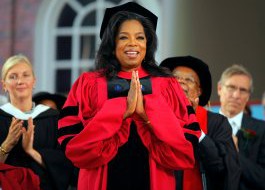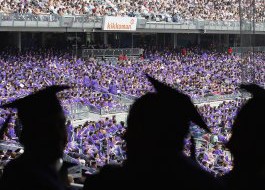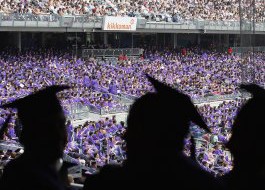Want to learn about the history of economics, how to code with Ruby on Rails, or the essentials of string theory? It’s all out there for free on the internet, and anyone who has the time or energy can learn it directly from the experts.
The Information Age grants us an unprecedented amount of access to the world’s knowledge – and some thinkers like James Altucher or Peter Thiel see this leading to a path where the role of colleges and universities will continue to diminish.
We share that sentiment. The most recent crop of successful entrepreneurs like Evan Spiegel or Mark Zuckerberg already proves that entrepreneurs can make billions without spending a full four years in the classroom. The forthcoming generation will be even less tied to attending brick-and-mortar institutions.
There’s one caveat to this line of thought, however, and it coincides with this week’s chart. While one can say that the actual academic value of these institutions may be undermined by access to the digital world, the value of these as places to “rub shoulders” with up-and-comers still remains entrenched.

A BILLIONAIRE MAKING MACHINE
Talk to any successful person in business and they will tell you that developing a strong network is half of the battle. As far as schools go, Harvard is the perfect example of the “network effect” at work.
To date, a total of 35 of the richest 500 people in the world have emerged from the storied halls of Harvard. In fact, more billionaires have graduated from Harvard than all of those hailing from Saudi Arabia and Spain combined.
The total net worth of the top 35 Harvard billionaire graduates? It’s $309 billion – roughly equivalent to the GDP of Hong Kong or Ireland. With alumni like Charlie Munger, Meg Whitman, John Paulson, Steve Ballmer, Paul Singer, Ken Griffin, Ray Dalio, and Michael Bloomberg among the ranks of Harvard graduates, it’s a powerful hub to tap into. Today’s Harvard students and professors take advantage of this prestigious network every day.
Elite universities still serve as filtering mechanisms that only bring in students that are smart, well-connected, or both. Top schools like Stanford or Harvard have acceptance rates less than 6%, and this exclusivity gives graduating students a connected and privileged network from the get-go.
One hundred years from now, will these institutions still have the same track records from the exclusivity factor alone? It remains to be seen, but for now they are still undisputed billionaire making machines until proven otherwise.
Read the original article on Visual Capitalist. Get rich, visual content on business and investing for free at the Visual Capitalist website, or follow Visual Capitalist on Twitter, Facebook, or LinkedIn for the latest. Copyright 2017. Follow Visual Capitalist on Twitter.




